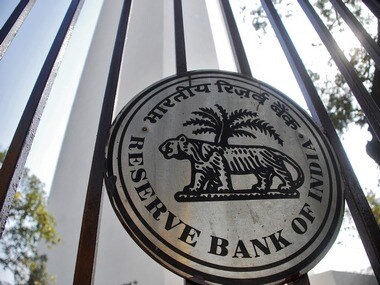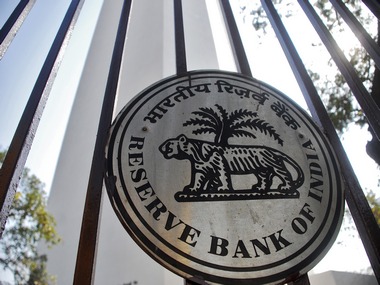Remember the quote from Macbeth? “Letting ‘I dare not’ wait upon ‘I would’, Like the poor cat i’ the adage? ”
This could be the predicament of the Reserve Bank of India (RBI) when it takes a crucial call on interest rates on Friday, 16 September. It will be damned if it does, damned it it doesn’t. The RBI Governor’s problem is compounded because there is strong justification for both increasing interest rates further and not doing anything. How will the coin spin?
The coming monetary policy review is significant because interest rates do appear to have impacted one side of the equation, but not the other - inflation.
Monetary policy has two possible objectives: supporting growth or controlling inflation. The impact on growth happens through the credit chain. Higher interest rates lower demand for credit which, in turn, comes in the way of consumption and investment, to the extent that it is funded by the financial system, and finally slows down excess demand. This transmission mechanism has worked partly if we juxtapose the output numbers that are available.
[caption id=“attachment_84534” align=“alignleft” width=“380” caption=“The RBI Governor’s problem is compounded because there is strong justification for both increasing interest rates further and not doing anything. Reuters”]
 [/caption]
[/caption]
To begin with, growth in credit has been tardy at 2.6 percent compared with 3.4 percent last year during the first five months of the year, though admittedly the 3G auction revenues (financed with credit) did push up the growth rate last year. The industrial growth rate has narrowed to 5.8 percent on a cumulative basis for April-July.
This means that somewhere the growth story has been stained, which was the idea to begin with. However, the last link with inflation remains unaccomplished as core inflation, which, broadly speaking, is the increase in the prices of manufactured products, remains high at 7.8 percent in August, and has shown an increasing trend since May.
This is notwithstanding the fact that global commodity prices have shown a downward trend following the euro region crisis and the distinct slowdown in economic activity. In particular, the growth in prices of chemicals and metals has been increasing quite sharply along with other agro-based food and textile products.
How should one read the possibilities before the RBI? Is the economy really slowing down? Ideally, to answer this question, we need to ask ourselves what is it that the RBI had in mind at the beginning of the year.
The RBI had spoken of 8 percent growth and the PM’s Economic Advisory Council talked of 8.2 percent. This means that we have targeted lower numbers for the year based on domestic and global considerations as the euro and American crises was known to both.
Against these numbers the actual growth of 7.7 percent in first quarter GDP and industrial growth of 5.8 percent in April-July look reasonable and assuring in our quest to attain these numbers. Further, growth in exports (54.2 percent) and imports (40.4 percent) has been impressive between April-August, indicating that a lot has been happening in this sector even though things are slowing down of late. Growth has not really been thwarted, though there are signs of interest rates hurting.
Inflation has been a tough nut to crack and while the RBI admits that food and fuel prices are beyond its purview, it has focused on core inflation through monetary policy action - and with limited success. The RBI as well as the government admit that overall inflation will remain at the 9 percent level till November and will move downwards once the harvest comes in subsequently.
This means we are expecting inflation to come down to the 6-7 percent range only by March next year. Therefore, there is still scope to bring down prices by increasing interest rates further until this number comes down.
The issue which comes up is that by squeezing investment, which may help bring down core inflation, are we jeopardising future growth prospects? Once we move up the business cycle, we could slip back in case we go around searching for fresh capacity - the classic case of a double dip (slowdown rather than recession in our case).
The last question is what if the RBI pauses rate hikes for a while? The ideology here can be that if past hikes have not quite worked, then there is no assurance that it will now. Alternatively, if there are lags, then they should work in the next few months to bring down inflation to more acceptable levels. Therefore we do not need to do anything for now.
However, by not increasing rates and pausing for breath, it would actually mean deviating from an objective the RBI set for itself in May, which may make the continuous increase in rates we have had so far quite meaningless. Therefore, for all purposes, a rate hike has to be invoked to justify the earlier ones as well as show commitment to fighting inflation.
We really do need the government to do its bit, even if it means going against conventional economic thinking. Fuel prices, for one, have to be brought down through tax cuts or even subsidies if we are keen to tackle inflation. The fiscal deficit will take a hit, but then it may be worth it if it eases the pain of inflation as well as interest rates for future growth.
Food prices can be brought down only by augmenting supplies through better delivery. This is a challenge in the short run, but has to be addressed or else the present brand of inflation will feed back into future prices through the price fixing process (of the Commission on Agricultural Costs and Prices) and accentuate the spiral.
The solution is evidently that we need to apply a comprehensive inflation plan and not leave it all to the RBI to find a singular solution. Presently it appears that the RBI is the bowler operating from both ends.
The author is Chief Economist, CARE Ratings. Views are personal.
)